Renewable Energy Innovations for Beginners: Clear Insights
Category: Renewable Energy
Unlocking Renewable Energy Innovations for Beginners
If you've ever felt overwhelmed trying to grasp the science and cutting-edge innovations behind renewable energy, you're not alone. Whether you're a curious beginner or an electrical engineer seeking clear, concise explanations of wind, solar, and emerging technologies, understanding their fundamentals and latest breakthroughs is vital. You likely arrived here because you want to decode complex renewable energy concepts without jargon-heavy explanations or incomplete info. This blog post uniquely bridges the gap by blending beginner-friendly overviews with the in-depth scientific context electrical engineers appreciate. You'll start with the basics of how renewable systems work, then explore the latest innovations and how they impact energy production and storage. By the end, you'll have a solid foundation and actionable insights that can guide your learning or professional projects. This isn’t just another high-level summary; it’s a practical gateway into the remarkable world of renewable energy innovation designed specifically to support your journey, no matter your expertise level. Keep reading to deepen your understanding and get a leg up in one of the fastest-growing tech fields today.
- Unlocking Renewable Energy Innovations for Beginners
- Understanding Renewable Energy Fundamentals
- Innovations in Solar Technology: Latest Advances Explained for Beginners
- Wind Energy Breakthroughs: Modern Turbine Designs and Offshore Innovations
- Emerging Renewable Technologies: Tidal, Geothermal, Hydrogen Fuel Cells, and Advanced Bioenergy
- Energy Storage and Battery Innovations: Powering the Renewable Future
- Smart Grids and Energy Management: Optimizing Renewable Energy Integration with Digital Technologies and AI
- Hybrid and Off-Grid Renewable Systems: Combining Multiple Renewable Sources and Storage for Efficient Off-Grid Solutions
- Environmental and Economic Benefits of Innovations: Reducing Costs, Enhancing Sustainability, and Driving Global Renewable Adoption
- Challenges and Future Trends: Overcoming Obstacles and Shaping the Renewable Energy Landscape
- Hands-on Learning Resources and Tools: Explore Renewable Energy Technology Practically
Understanding Renewable Energy Fundamentals
To truly appreciate the cutting-edge renewable energy innovations shaping our future, it’s essential to grasp some core energy concepts and the primary types of renewable sources. At its heart, renewable energy comes from natural processes that are continually replenished, unlike fossil fuels which are finite and harmful to the environment. Understanding these basics provides the foundation needed to explore how modern technologies harness and improve these energy flows efficiently.
Key Energy Concepts
- Energy Conversion – Renewable technologies convert natural resources like sunlight, wind, or geothermal heat into usable electrical or thermal energy through specialized systems.
- Sustainability – Unlike conventional energy, renewables emit little to no greenhouse gases, critically reducing climate impact.
- Intermittency – Many renewable sources, such as solar and wind, depend on environmental conditions, leading to variable energy supply that innovations seek to stabilize.
- Energy Storage – Breakthroughs in battery and other storage technologies are crucial to balance supply and demand and ensure reliable power delivery.
Types of Renewable Energy Sources
- Solar Energy: Captured via photovoltaic (PV) cells that convert sunlight directly into electricity, or through solar thermal systems that use heat.
- Wind Energy: Generated using turbines that convert kinetic wind power into electrical energy.
- Hydropower: Uses flowing water to spin turbines, producing consistent power, especially from dams or run-of-river systems.
- Geothermal Energy: Extracts heat stored beneath the Earth’s surface for electricity production or heating.
- Biomass Energy: Derived from organic materials and waste to produce biofuels or burnable energy sources.
Why Innovation in Renewable Energy Matters
Innovation is the driving force behind making renewable energy more efficient, affordable, and scalable. As the global demand for clean power rises, breakthroughs such as advanced turbine designs, next-generation solar panels with higher conversion efficiencies, and smarter grid integration systems play vital roles. These innovations address challenges like:
- Improving performance during low-resource conditions (e.g., cloudy days or low wind).
- Enhancing energy storage solutions for better reliability.
- Lowering production and installation costs to expand accessibility.
- Integrating renewables seamlessly into existing power grids.
By understanding these fundamentals, you lay the groundwork to explore how emerging technologies transform renewable energy from a promising idea into a cornerstone of modern, sustainable electricity infrastructure.
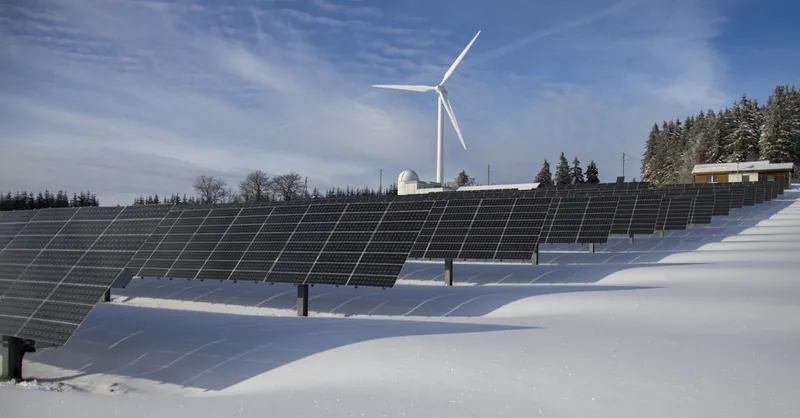
Image courtesy of Pixabay
Innovations in Solar Technology: Latest Advances Explained for Beginners
Solar energy continues to lead the renewable revolution, thanks to rapid innovations that enhance efficiency, durability, and versatility. Among the most exciting breakthroughs are perovskite solar cells, bifacial panels, and solar tracking systems, each playing a key role in transforming how we harvest sunlight into electricity.
Perovskite Solar Cells: The Future of Photovoltaics
Perovskite solar cells are a new class of photovoltaic technology made from a unique crystal structure called perovskite, which can be manufactured using low-cost materials and simple processes. Unlike traditional silicon cells, perovskites offer:
- Higher Power Conversion Efficiency – Lab tests have shown perovskite cells reaching efficiencies above 25%, rivaling and sometimes surpassing conventional silicon cells.
- Flexibility and Lightweight Design – These cells can be made lightweight and flexible, opening applications on curved surfaces or portable solar devices.
- Lower Production Costs – Because they require less energy-intensive manufacturing, perovskites promise more affordable solar panels in the future.
Although still under development for durability and large-scale production, perovskite technology represents a game-changing step towards more accessible and efficient solar energy.
Bifacial Solar Panels: Doubling Energy Capture
Bifacial panels are designed to collect sunlight on both their front and back surfaces, unlike traditional single-sided panels. This innovation allows systems to:
- Harvest reflected sunlight from the ground and surrounding surfaces.
- Increase overall energy yield by up to 15-30% depending on installation conditions.
- Enhance performance in diffuse or low-light environments.
Bifacial technology is ideal for rooftops, solar farms over reflective surfaces like sand or snow, and vertical installations, all helping to maximize energy output without increasing panel footprint.
Solar Tracking Systems: Following the Sun for Maximum Efficiency
Solar tracking systems move panels throughout the day to maintain optimal alignment with the sun’s position, enhancing light exposure. There are two main types:
- Single-axis trackers rotate panels east to west.
- Dual-axis trackers adjust tilt and rotation for precise sun tracking.
By improving energy capture by 10-25% compared to fixed-tilt installations, solar trackers are increasingly integrated into large-scale solar farms and even some residential setups, boosting power generation especially during early morning and late afternoon hours.
Together, these innovations drive the incredible evolution of solar technology, making it more efficient, versatile, and cost-effective than ever before. Embracing these advancements helps unlock the full potential of solar power as a cornerstone of a sustainable energy future.
Image courtesy of Kindel Media
Wind Energy Breakthroughs: Modern Turbine Designs and Offshore Innovations
Wind energy has rapidly evolved from traditional single-blade turbines to highly sophisticated systems that maximize efficiency and scalability. Today’s breakthroughs in wind technology focus not only on improved blade aerodynamics and materials but also on expanding deployment offshore, where wind resources are stronger and more consistent.
Modern Turbine Designs: Enhancing Efficiency and Capacity
Advancements in blade design and turbine architecture have significantly increased energy capture by reducing drag and optimizing lift. New materials like carbon fiber composites allow for longer, lighter blades that can sweep larger areas, directly boosting power output. Additionally, innovations include:
- Direct-drive turbines – Eliminating gearboxes reduces mechanical complexity and maintenance costs.
- Smart sensors and AI optimization – Real-time data collection helps adjust blade pitch and yaw for maximum energy capture in changing wind conditions.
- Modular and scalable designs – Enable easier assembly and upgradeability, reducing downtime and costs, especially in remote locations.
These improvements not only elevate single-turbine efficiency but also enable wind farms to produce more reliable and predictable power.
Offshore Wind Developments: Harnessing Vast, Untapped Resources
Offshore wind farms represent a critical frontier due to higher wind speeds and less turbulence over the ocean. Innovations in this area focus on:
- Floating turbine platforms – Allowing turbines to be installed in deeper waters previously inaccessible to fixed-bottom foundations.
- Enhanced anchoring and mooring systems – Improve stability and longevity in harsh marine environments.
- Grid integration technology – Facilitating efficient transmission of offshore-generated electricity to onshore grids with minimized losses.
By tapping into vast offshore wind resources, countries can significantly boost renewable electricity supply without the land constraints faced by onshore projects.
Together, these cutting-edge turbine designs and offshore innovations are transforming wind energy into a more efficient, scalable, and economically viable renewable resource. Continued R&D and deployment will play a pivotal role in decarbonizing power systems worldwide, helping meet ambitious clean energy targets.
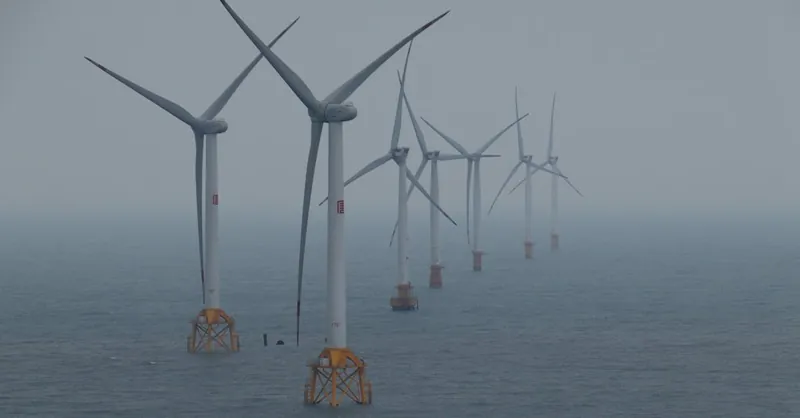
Image courtesy of gong qianlan
Emerging Renewable Technologies: Tidal, Geothermal, Hydrogen Fuel Cells, and Advanced Bioenergy
Beyond wind and solar, the renewable energy landscape is rapidly expanding with emerging technologies that tap into less conventional but highly promising natural resources. These innovations are critical for diversifying clean energy sources and enhancing grid resilience, especially as the world pursues net-zero carbon goals. Let’s explore four key emerging renewable technologies poised to transform how we produce and consume sustainable energy: tidal power, geothermal energy, hydrogen fuel cells, and advanced bioenergy systems.
Tidal Energy: Harnessing the Ocean’s Rhythmic Power
Tidal energy exploits the predictable rise and fall of ocean tides to generate electricity, offering a consistent and renewable power source unaffected by weather variability. Unlike solar and wind, tidal currents are highly reliable due to gravitational interactions between the Earth, moon, and sun. Key innovations in tidal power include:
- Tidal stream generators – underwater turbines that convert kinetic energy from tidal currents much like wind turbines do with air.
- Tidal barrage systems – dams built across estuaries to capture potential energy from high and low tides.
- Dynamic tidal power – an emerging concept involving large dams extending from coastlines, capturing tidal flows without enclosed basins.
With high energy density and predictability, tidal power has immense potential for coastal regions and island communities, providing a stable complement to more intermittent sources.
Geothermal Energy: Unlocking Earth’s Natural Heat
Geothermal energy leverages heat stored beneath the Earth’s crust to generate electricity and provide direct heating solutions. Recent innovations have expanded its applicability through:
- Enhanced geothermal systems (EGS), which create artificial reservoirs by injecting fluids into hot rock formations to extract heat.
- Low-temperature geothermal technologies that tap moderate heat sources for decentralized heating and cooling.
- Advanced drilling and sensing technologies that reduce costs and improve site targeting.
Because geothermal energy offers a constant, baseload power supply unaffected by weather or time of day, it is an essential pillar of a stable, renewable energy grid.
Hydrogen Fuel Cells: Clean Energy Carriers and Storage
Hydrogen fuel cells produce electricity through electrochemical reactions between hydrogen and oxygen, emitting only water vapor. This technology is gaining momentum as both an energy storage medium and a clean fuel for transportation and industry. Innovations driving the hydrogen economy include:
- Green hydrogen production using renewable-powered electrolysis, minimizing carbon footprint compared to traditional hydrogen manufacturing.
- Advanced fuel cell designs that improve efficiency, durability, and cost-effectiveness for applications ranging from vehicles to stationary power.
- Hydrogen blending in natural gas networks to reduce fossil fuel dependence.
Hydrogen’s versatility as a portable, zero-emission energy carrier positions it as a cornerstone in coupling renewable generation with sectors traditionally hard to electrify.
Advanced Bioenergy: Next-Generation Biomass Solutions
Bioenergy has evolved beyond simple biomass burning to include sophisticated approaches that enhance energy yields and reduce emissions. Emerging innovations include:
- Algae-based biofuels, which grow rapidly and have higher energy content per acre than traditional crops.
- Anaerobic digestion technologies that convert organic waste into biogas, improving waste management while generating renewable energy.
- Cellulosic biofuels derived from non-food plant materials, addressing food-versus-fuel concerns.
These advanced bioenergy systems contribute to a circular carbon economy by recycling organic materials and integrating with other renewable technologies for enhanced sustainability.
Together, tidal, geothermal, hydrogen fuel cells, and advanced bioenergy represent a dynamic frontier in renewable energy innovation. Their development and integration will be crucial for building a resilient, low-carbon energy future that meets increasing global demands while safeguarding our planet.
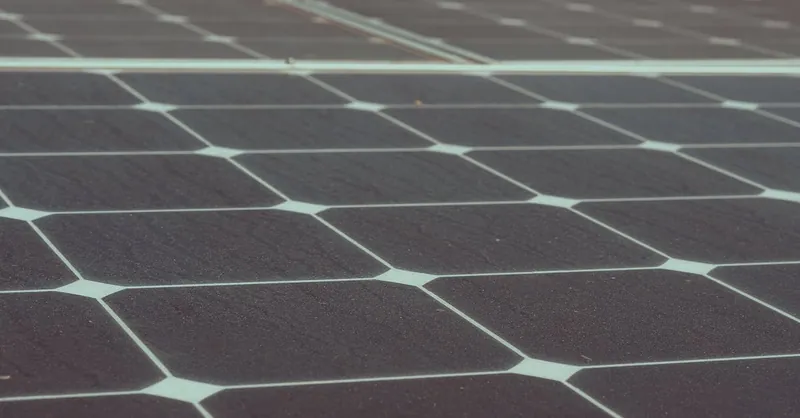
Image courtesy of Kindel Media
Energy Storage and Battery Innovations: Powering the Renewable Future
As renewable energy sources like solar and wind become increasingly prevalent, efficient and reliable energy storage has emerged as a critical component to address the challenge of intermittency. Innovative energy storage technologies ensure that excess energy generated during peak production periods can be saved and delivered when demand is high or when natural conditions are unfavorable. This seamless balancing act is vital for maintaining grid stability, improving energy reliability, and facilitating wider adoption of renewables.
Cutting-Edge Battery Chemistries
Traditional lithium-ion batteries have long dominated energy storage, but new battery chemistries are pushing the boundaries on performance, cost, and safety:
- Solid-State Batteries – By replacing liquid electrolytes with solid materials, these batteries offer higher energy density, longer life cycles, and reduced fire risk, making them promising for grid-scale storage and electric vehicles.
- Lithium-Sulfur Batteries – Featuring greater theoretical energy capacity and lightweight design, lithium-sulfur technology could deliver affordable, high-capacity storage once current durability challenges are overcome.
- Sodium-Ion Batteries – Offering a low-cost alternative that leverages abundant sodium instead of lithium, these batteries show potential for large-scale energy storage despite slightly lower energy density.
These advancements aim to improve energy density, lower production costs, and enhance the environmental footprint of battery manufacturing, directly benefiting renewable integration.
Flow Batteries: Flexible, Scalable Storage Solutions
Flow batteries operate by circulating liquid electrolytes through electrochemical cells to store and release energy. This design enables:
- Scalability – Energy capacity can be increased simply by enlarging electrolyte tanks, ideal for utility-scale storage.
- Long Duration Storage – Capable of discharging over many hours without degradation, flow batteries help smooth out extended renewable intermittency.
- High Cycle Life – Reduced wear on battery components delivers exceptional durability and minimal performance loss over thousands of cycles.
Common flow battery types include vanadium redox and zinc-bromine systems, both gaining traction in large renewable projects worldwide due to their robust performance and long-term cost-effectiveness.
Integrated Energy Storage Solutions: Smarter Grids and Hybrid Systems
Integrated storage solutions combine battery technologies with smart controls, power electronics, and renewable generation assets to optimize energy flow and grid interaction. Innovations in this space include:
- Hybrid Systems that pair different battery chemistries or combine storage with solar/wind installations to maximize efficiency and resilience.
- Vehicle-to-Grid (V2G) Technology, allowing electric vehicles to provide stored energy back to the grid during peak demand.
- AI-Driven Energy Management Systems that forecast production and consumption patterns, dynamically controlling storage dispatch for optimal grid stability.
By leveraging these sophisticated integrated systems, utilities and consumers can unlock enhanced grid flexibility, improved renewable utilization rates, and lower energy costs.
Together, breakthroughs in battery chemistries, flow batteries, and integrated storage platforms are ushering in a new era of efficient, scalable, and resilient energy storage, essential for the future of renewable energy. Mastering these innovations is key to overcoming intermittency challenges and accelerating the transition to a clean, sustainable energy landscape.

Image courtesy of Castorly Stock
Smart Grids and Energy Management: Optimizing Renewable Energy Integration with Digital Technologies and AI
As renewable energy sources like solar and wind become more prevalent, integrating them reliably into the power grid presents complex challenges due to their variable and decentralized nature. Smart grids—advanced electricity networks enhanced with digital communication and automation technologies—have emerged as a transformative solution to manage these challenges and optimize renewable energy use. Through real-time data collection, intelligent control systems, and artificial intelligence (AI), smart grids enhance grid stability, improve energy efficiency, and enable dynamic balancing of supply and demand.
How Smart Grids Revolutionize Energy Management
Smart grids employ a combination of sensors, smart meters, and communication networks that continuously monitor grid conditions, renewable generation, and consumer energy usage. This digital intelligence allows utilities and grid operators to:
- Forecast Renewable Output – Using AI-driven analytics to predict solar and wind power generation based on weather patterns, enabling better scheduling and resource allocation.
- Dynamic Load Balancing – Automatically adjusting energy flow to balance supply with demand instantaneously, reducing blackouts and fluctuations caused by intermittent renewables.
- Distributed Energy Resource Integration – Seamlessly incorporating rooftop solar, battery storage, electric vehicles, and other distributed generation assets into a centralized control framework.
- Demand Response Programs – Enabling consumers to participate in grid management by adjusting their consumption during peak times or when renewable generation is low.
Artificial Intelligence: The Brain Behind Smart Energy Systems
AI algorithms analyze vast amounts of data collected from smart grid components to optimize performance at every level. Key AI applications in renewable energy management include:
- Predictive Maintenance – Identifying equipment faults and degradation early to prevent outages and extend asset lifetimes.
- Energy Trading Optimization – Facilitating efficient transaction decisions in energy markets, maximizing returns from renewable power production.
- Real-Time Grid Optimization – Continuously adjusting control strategies for voltage, frequency, and reactive power to stabilize the grid.
- Consumer Behavior Modeling – Personalizing energy-saving recommendations to end-users based on consumption patterns.
Together, smart grids and AI create a resilient, flexible energy ecosystem that maximizes renewable penetration without compromising grid reliability. This digital transformation is essential for scaling clean energy solutions globally and achieving a sustainable, low-carbon future.
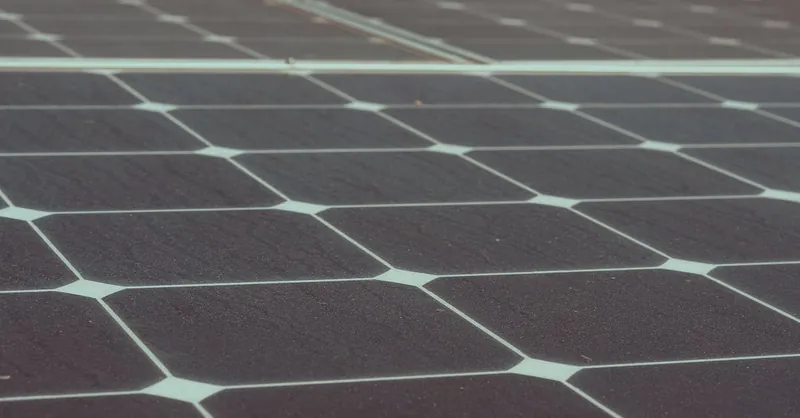
Image courtesy of Kindel Media
Hybrid and Off-Grid Renewable Systems: Combining Multiple Renewable Sources and Storage for Efficient Off-Grid Solutions
Hybrid and off-grid renewable energy systems represent a powerful innovation in delivering clean, reliable electricity where traditional grid access is limited or unavailable. By integrating multiple renewable energy sources—such as solar, wind, and sometimes hydro—with advanced energy storage solutions, these systems optimize resource utilization and overcome the inherent intermittency of single-source renewables. This combination ensures a steady and efficient flow of electricity in remote areas, islands, or critical infrastructure sites that require energy independence.
Key Features and Benefits of Hybrid and Off-Grid Systems
- Resource Complementarity – Wind and solar power often complement each other; for instance, solar panels generate maximum output during sunny, calm days, whereas wind turbines can produce energy during cloudy or nighttime windy periods. Combining these sources improves overall energy availability.
- Energy Storage Integration – Incorporating batteries or other storage technologies allows excess generated energy to be stored and dispatched during periods of low generation, ensuring continuous power supply.
- Scalability and Flexibility – Hybrid systems can be customized to the specific energy needs and local resource availability, scaling from small residential installations to large community microgrids.
- Reduced Dependency on Fossil Fuels – Off-grid hybrid solutions minimize or eliminate the need for diesel generators, significantly cutting carbon emissions and operational costs.
How Hybrid Systems Work: A Simplified Overview
Hybrid renewable systems use a central controller that intelligently manages energy flows between different generation assets, storage units, and loads. The controller prioritizes renewable sources when available, switches seamlessly between generation modes, and manages battery charging/discharging to maintain optimal system performance and longevity.
This integrated approach leads to:
- Increased system reliability by mitigating intermittency issues.
- Improved energy efficiency by optimizing use of all available renewable inputs.
- Lower total cost of ownership by reducing fuel consumption, maintenance, and grid reliance.
By combining multiple renewable technologies with smart storage and control strategies, hybrid and off-grid renewable systems offer efficient, sustainable, and resilient solutions for diverse energy challenges in off-grid and remote environments. This innovation is critical for expanding global energy access while advancing climate goals.
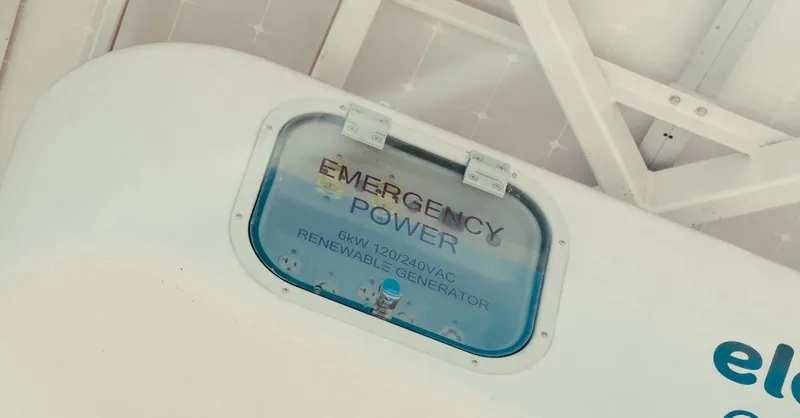
Image courtesy of Kindel Media
Environmental and Economic Benefits of Innovations: Reducing Costs, Enhancing Sustainability, and Driving Global Renewable Adoption
Innovations in renewable energy technologies not only advance technical performance but also deliver profound environmental and economic benefits that accelerate the global transition to sustainable power. By continuously reducing costs and improving system efficiencies, these breakthroughs help make renewable energy more accessible and affordable, encouraging widespread adoption while mitigating environmental impacts.
Driving Down Costs for Global Accessibility
Technological advancements in solar panels, wind turbines, energy storage, and smart grid integration have contributed to significant cost reductions across the renewable energy sector. For example:
- Lower Manufacturing and Installation Costs: Innovations like perovskite solar cells and modular turbine designs reduce material and labor expenses.
- Improved Efficiency: Higher conversion efficiencies translate to greater energy output per unit area or capacity, decreasing the levelized cost of electricity (LCOE).
- Enhanced Lifespan and Reduced Maintenance: Smart sensors and AI-driven predictive maintenance minimize downtime and extend asset life, lowering operational costs.
- Economies of Scale and Mass Deployment: Streamlined production and standardized components enable mass manufacturing, further pushing down prices.
As a result, renewables have become among the cheapest sources of new electricity generation worldwide, enabling emerging economies and remote communities to leapfrog traditional fossil-fuel infrastructure.
Advancing Sustainability through Reduced Emissions and Resource Use
Innovations improve the environmental sustainability of renewable energy by minimizing greenhouse gas emissions and reducing resource consumption throughout the lifecycle:
- Lower Carbon Footprint: Emerging technologies such as green hydrogen production and advanced bioenergy systems drastically cut carbon emissions compared to fossil fuels.
- Resource Efficiency: Next-generation materials and manufacturing processes use fewer rare or toxic elements, reducing ecological impact.
- Circular Economy Integration: Technologies focused on recycling components and utilizing waste biomass contribute to sustainable resource cycles.
- Reduced Land and Water Usage: Innovations like offshore wind and floating solar optimize land utilization, while low-water geothermal and photovoltaic systems alleviate water stress.
These enhancements not only combat climate change but also support biodiversity preservation and environmental health worldwide.
Catalyzing Renewable Adoption Globally
By making renewable energy economically competitive and environmentally preferable, innovations accelerate adoption across diverse markets. Key drivers include:
- Energy Access Expansion: Affordable hybrid and off-grid systems empower remote or underserved populations with reliable clean energy.
- Policy and Investment Alignment: Falling costs and proven sustainability benefits encourage governments and private investors to prioritize renewables.
- Grid Modernization Readiness: Smart grids and energy management systems facilitate seamless integration of growing renewable capacities.
- Job Creation and Economic Growth: Renewable industries foster new employment opportunities and stimulate green economic development.
Together, these benefits form a virtuous cycle where innovation fuels adoption, adoption drives scale, and scale further reduces costs, strengthening the global clean energy transition.
Understanding the environmental and economic advantages of innovative renewable technologies highlights why continuous research, development, and deployment are essential. These innovations not only power a sustainable future but also deliver tangible value through lower costs, enhanced ecological stewardship, and broader energy access worldwide.

Image courtesy of Irina Iriser
Challenges and Future Trends: Overcoming Obstacles and Shaping the Renewable Energy Landscape
Despite impressive strides in renewable energy innovations, the sector still faces significant challenges that must be addressed to realize a fully sustainable and resilient energy future. Key obstacles include the intermittency of renewable sources, high initial capital costs, resource and material limitations, and complex grid integration demands. For instance, the variable nature of solar and wind power requires advanced energy storage technologies and smart grid solutions to ensure reliable electricity supply. Additionally, scaling emerging technologies like green hydrogen and offshore wind demands substantial infrastructure investment and policy support.
Looking ahead, several future trends are poised to transform renewable energy innovation:
- Next-Generation Energy Storage – Development of ultra-high-capacity, long-duration batteries and novel storage methods such as solid-state, flow batteries, and green hydrogen will enhance grid flexibility and address intermittency.
- Digitalization and AI-Driven Energy Systems – Expanding the role of artificial intelligence and machine learning in grid management and predictive analytics will optimize energy production, distribution, and consumption on unprecedented scales.
- Decentralized and Peer-to-Peer Energy Networks – Blockchain and distributed ledger technologies will empower consumers and prosumers to trade renewable energy securely and efficiently, fostering community-based energy resilience.
- Policy Evolution and International Collaboration – Ambitious climate targets, supportive regulatory frameworks, carbon pricing, and global partnerships are essential to accelerate renewable deployment and innovation funding.
- Sustainable Material Innovation – Research into recyclable, abundant, and low-impact materials will mitigate supply chain risks and improve the environmental profile of renewable technology manufacturing.
Successfully navigating these challenges through continued technological innovation, strategic policymaking, and global cooperation will unlock the full potential of renewable energy. This will enable a cleaner, more equitable, and economically vibrant energy future that addresses the pressing demands of climate change and energy security worldwide.

Image courtesy of Enrique
Hands-on Learning Resources and Tools: Explore Renewable Energy Technology Practically
Diving into renewable energy innovations is not only about theoretical knowledge—practical experience plays a crucial role in deepening understanding and developing skills. Whether you are a beginner eager to explore or an electrical engineer aiming to prototype and experiment, there are numerous beginner-friendly kits, simulation software, and reading materials designed to make renewable technologies accessible and engaging. These tools help bridge the gap between concepts and real-world applications, fostering hands-on learning that reinforces scientific principles and inspires innovation.
Recommended Beginner Kits for Renewable Energy Exploration
Starting with DIY kits is a fantastic way to experiment with solar, wind, and hybrid systems on a small scale. Some highly regarded options include:
- Solar Panel Experiment Kits – These kits typically include small photovoltaic cells, wiring, and simple meters to build basic solar-powered devices like fans or lights. They help beginners grasp solar energy conversion and efficiency firsthand.
- Wind Turbine Model Kits – Featuring components such as blades, motors, and mounting brackets, wind turbine kits let users assemble functional mini turbines, demonstrating principles of aerodynamics and electricity generation.
- Hybrid Renewable Energy Kits – Combining solar and wind modules with battery storage, these kits illustrate how different renewable sources can complement each other and power small circuits or LEDs, ideal for exploring hybrid system concepts.
Such kits often come with instruction manuals and experiment guides that explain underlying physics and encourage modifications, promoting an interactive learning experience suited for classrooms, hobbyists, or early-stage engineers.
Simulation Software for Renewable Energy Design and Analysis
For those interested in virtual experimentation and more technical design work, simulation platforms provide powerful tools to model and optimize renewable energy systems before building physical setups. Popular beginner-friendly options include:
- PV*SOL and SAM (System Advisor Model) – These software allow users to model photovoltaic systems, estimate energy yields, and simulate financial performance under different conditions.
- QBlade and FAST – Focused on wind turbine design and aerodynamics, these open-source tools support blade shape optimization and dynamic performance simulation.
- HOMER Energy – Widely used for hybrid systems and microgrid design, HOMER simulates system components, storage integration, and load management to analyze feasibility and efficiency.
Exploring these platforms offers practical insights into system sizing, resource assessment, and performance challenges, providing a valuable complement to physical experimentation.
Further Reading and Educational Resources
To expand your theoretical and applied knowledge, a variety of books, online courses, and websites cater to different learning needs:
- Books: Titles like “Renewable Energy: Power for a Sustainable Future” by Godfrey Boyle and “Wind Energy Explained” by Manwell et al. provide comprehensive, beginner-to-intermediate coverage of renewable energy science and engineering.
- MOOCs: Platforms such as Coursera, edX, and FutureLearn offer courses on solar energy, wind power, and energy storage technologies, often including hands-on project components and expert instruction.
- Websites and Forums: Communities like the National Renewable Energy Laboratory (NREL), ResearchGate, and renewable energy subreddits provide up-to-date research articles, discussions, and practical tips for learners at all levels.
Engaging with these resources encourages continuous learning and keeps you connected with the latest advancements in renewable technologies.
By leveraging these hands-on kits, simulation tools, and curated educational materials, beginners and professionals alike can effectively explore the fascinating world of renewable energy innovation. Practical experimentation not only deepens understanding but also sparks creativity, empowering you to contribute meaningfully to the evolving clean energy landscape.

Image courtesy of Artem Podrez
